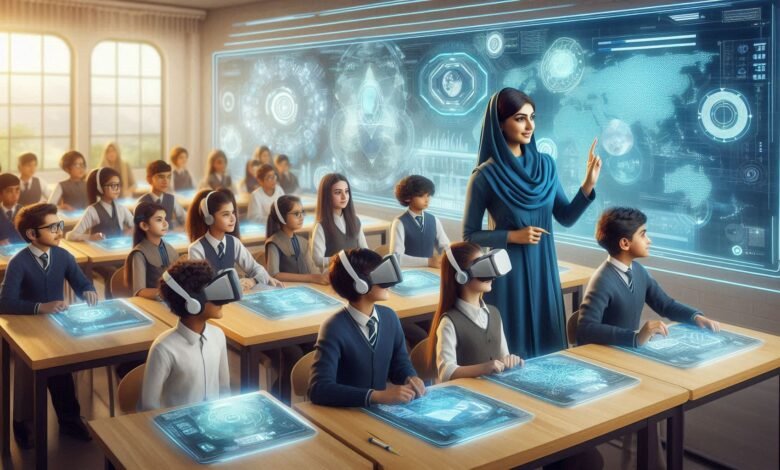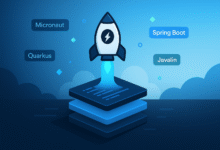The Future of AI in Pakistan Education System: A Comprehensive Outlook
This article explores the future of AI in Pakistan’s education system, detailing its potential applications, benefits, challenges, and the steps needed to integrate AI effectively.

Artificial Intelligence (AI) is revolutionizing industries worldwide, and education is no exception. In Pakistan, where the education system faces numerous challenges, AI presents a transformative opportunity to address long-standing issues and create a more inclusive, efficient, and innovative learning environment. This article explores the future of AI in Pakistan’s education system, detailing its potential applications, benefits, challenges, and the steps needed to integrate AI effectively.
1. Personalized Learning Experiences
What is Personalized Learning?
Personalized learning tailors educational content to meet the individual needs, strengths, and weaknesses of each student. AI-powered systems can analyze student data, such as learning patterns, performance, and preferences, to create customized learning paths.
How AI Enables Personalized Learning in Pakistan
In Pakistan, where classrooms are often overcrowded and teachers struggle to cater to individual students, AI can bridge the gap. Adaptive learning platforms, powered by AI, can provide students with personalized resources, such as videos, quizzes, and interactive modules, based on their unique learning styles. For instance, a student struggling with mathematics can receive additional exercises and explanations, while another excelling in the subject can be challenged with advanced problems.
Benefits
- Improved Learning Outcomes: Personalized learning ensures that students grasp concepts at their own pace, leading to better understanding and retention.
- Reduced Dropout Rates: By addressing individual learning gaps, AI can help reduce dropout rates, which are a significant issue in Pakistan.
- Teacher Support: AI tools can assist teachers by identifying students who need extra help, allowing educators to focus their efforts more effectively.
2. AI-Powered Administrative Efficiency
The Role of AI in Administration
Educational institutions in Pakistan often grapple with administrative inefficiencies, such as manual record-keeping, scheduling conflicts, and resource allocation issues. AI can automate these processes, saving time and reducing errors.
Applications in Pakistan
- Automated Attendance Systems: AI can streamline attendance tracking using facial recognition or biometric systems, eliminating the need for manual roll calls.
- Resource Management: AI algorithms can optimize the allocation of resources, such as classrooms, teachers, and equipment, ensuring maximum utilization.
- Data Analysis: AI can analyze institutional data to identify trends, such as student performance or teacher effectiveness, enabling data-driven decision-making.
Benefits
- Time Savings: Automating administrative tasks frees up time for educators and administrators to focus on core educational activities.
- Cost Efficiency: Reduced manual labor and optimized resource allocation can lead to significant cost savings.
- Improved Accuracy: AI minimizes human errors in record-keeping and data analysis.
3. Bridging the Urban-Rural Education Gap
The Education Divide in Pakistan
Pakistan’s education system is marked by a stark divide between urban and rural areas. Rural schools often lack qualified teachers, infrastructure, and learning resources, leading to poor educational outcomes.
How AI Can Help
- Virtual Classrooms: AI-powered virtual classrooms can bring quality education to remote areas. Students in rural Pakistan can attend live or recorded lectures by expert teachers from urban centers or even abroad.
- Language Translation: AI-driven translation tools can make educational content accessible in regional languages, breaking down language barriers.
- Offline Learning Solutions: AI can enable offline access to educational resources through apps and platforms that work without constant internet connectivity, a common issue in rural areas.
Benefits
- Equal Opportunities: AI can democratize education by providing equal access to quality resources for all students, regardless of their location.
- Enhanced Teacher Training: AI can facilitate online training programs for rural teachers, improving their skills and teaching methods.
- Community Engagement: AI-powered platforms can involve parents and communities in the education process, fostering a supportive learning environment.
Read More: The Scope of AI in Pakistan – Challenges and Opportunities
4. AI in Curriculum Development
The Need for Modern Curricula
Pakistan’s education system often relies on outdated curricula that do not align with global standards or the demands of the modern job market. AI can play a crucial role in developing dynamic, relevant, and future-ready curricula.
How AI Can Transform Curriculum Development
- Data-Driven Insights: AI can analyze global educational trends, job market requirements, and student performance data to recommend updates to the curriculum.
- Real-Time Updates: Unlike traditional curricula, which take years to revise, AI can enable real-time updates, ensuring that students learn the most current and relevant content.
- Skill-Based Learning: AI can identify emerging skills, such as coding, data analysis, and digital literacy, and integrate them into the curriculum.
Benefits
- Relevance: A modern curriculum ensures that students are equipped with the skills needed for the 21st-century workforce.
- Global Competitiveness: Updated curricula help Pakistani students compete on a global stage.
- Employability: By aligning education with industry needs, AI can enhance graduates’ employability.
5. AI for Teacher Training and Professional Development
The Challenge of Teacher Training
Pakistan faces a shortage of qualified teachers, particularly in rural areas. Even in urban centers, many teachers lack the training to adopt modern teaching methods and technologies.
AI-Driven Solutions
- Online Training Platforms: AI can provide personalized training programs for teachers, helping them improve their pedagogical skills and stay updated with the latest teaching tools.
- Performance Feedback: AI can analyze teaching methods and provide feedback, enabling teachers to refine their techniques.
- Resource Sharing: AI-powered platforms can facilitate the sharing of best practices and resources among teachers, fostering a collaborative professional community.
Benefits
- Enhanced Teaching Quality: Well-trained teachers can deliver better education, improving student outcomes.
- Continuous Learning: AI enables lifelong learning for teachers, ensuring they remain effective in a rapidly changing educational landscape.
- Increased Motivation: Access to professional development opportunities can boost teacher morale and retention.
6. AI in Assessment and Evaluation
The Limitations of Traditional Assessment
Traditional assessment methods in Pakistan, such as written exams, often fail to measure critical thinking, creativity, and problem-solving skills. Moreover, manual grading is time-consuming and prone to bias.
AI-Powered Assessment Tools
- Automated Grading: AI can grade assignments and exams quickly and accurately, reducing the burden on teachers.
- Skill-Based Evaluation: AI can assess a broader range of skills, including collaboration, communication, and critical thinking, through interactive assessments.
- Predictive Analytics: AI can predict student performance and identify at-risk students, enabling early intervention.
Benefits
- Fairness: AI eliminates human bias in grading, ensuring a fair evaluation process.
- Efficiency: Automated grading saves time and allows teachers to focus on instruction.
- Holistic Evaluation: AI provides a more comprehensive assessment of student abilities, beyond rote memorization.
7. Challenges and Ethical Considerations
Infrastructure and Accessibility
While AI holds immense potential, its implementation in Pakistan faces significant challenges. Limited internet access, lack of technological infrastructure, and high costs can hinder the adoption of AI in education.
Data Privacy and Security
The use of AI involves the collection and analysis of vast amounts of student data, raising concerns about privacy and security. Ensuring that data is protected and used ethically is crucial.
Teacher and Student Resistance
Resistance to change is a common barrier to AI adoption. Teachers and students may be hesitant to embrace new technologies due to a lack of familiarity or fear of job displacement.
Addressing the Challenges
- Government Investment: The Pakistani government must invest in infrastructure, such as internet connectivity and digital devices, to support AI integration.
- Policy Frameworks: Clear policies and regulations are needed to ensure data privacy and ethical AI use.
- Awareness Campaigns: Educating teachers, students, and parents about the benefits of AI can help overcome resistance.
8. The Road Ahead: Steps for Successful AI Integration
Collaboration Between Stakeholders
Successful AI integration requires collaboration between the government, educational institutions, technology providers, and the private sector. Public-private partnerships can drive innovation and resource sharing.
Pilot Programs
Implementing pilot programs in select schools can help test AI solutions, identify challenges, and refine strategies before scaling up.
Teacher Training
Investing in teacher training is essential to ensure that educators are equipped to use AI tools effectively.
Monitoring and Evaluation
Continuous monitoring and evaluation of AI initiatives can help measure their impact and make necessary adjustments.
Conclusion
The future of AI in Pakistan’s education system is bright, offering solutions to some of the most pressing challenges in the sector. From personalized learning and administrative efficiency to bridging the urban-rural divide and modernizing curricula, AI has the potential to transform education in Pakistan. However, realizing this potential requires careful planning, investment, and collaboration among all stakeholders. By embracing AI, Pakistan can create a more inclusive, efficient, and innovative education system that prepares its students for the challenges and opportunities of the future.










